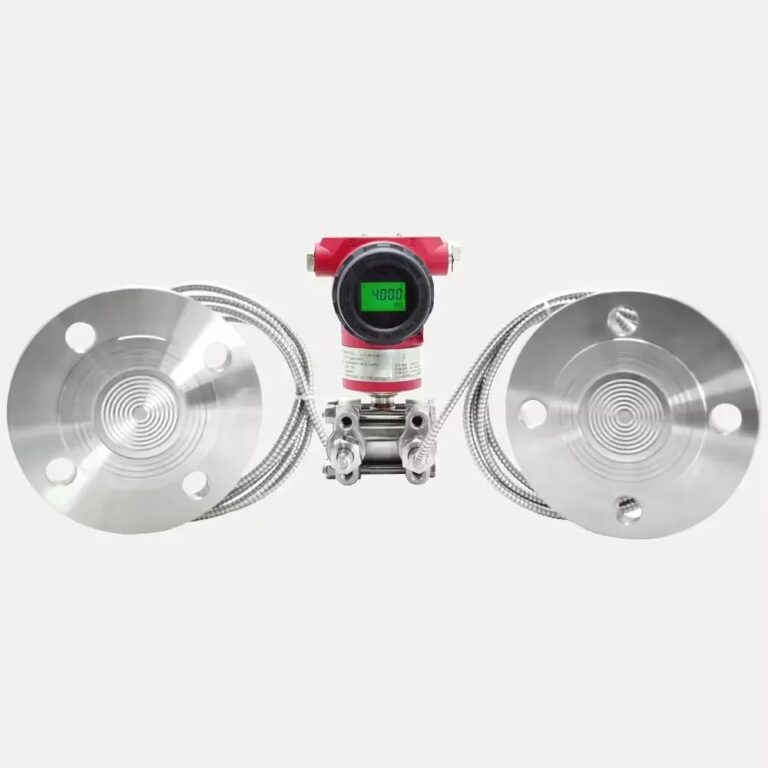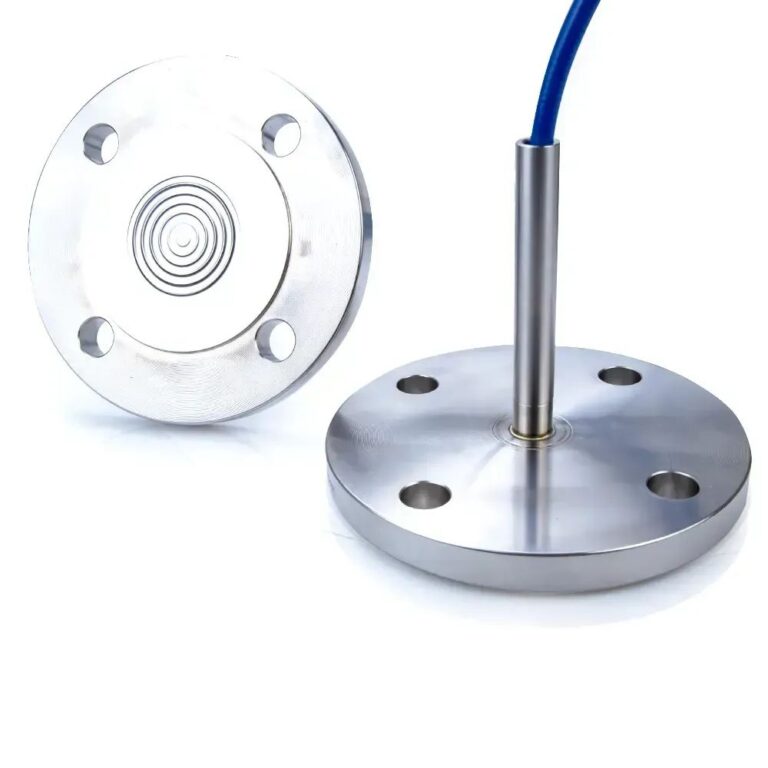In industrial process control, accurate and reliable level measurement is essential for safety, efficiency, and automation. Among various types of level instruments, single-flange and double-flange differential pressure level transmitters are two commonly used solutions in industries such as petrochemical, pharmaceutical, and power generation.
This article presents a detailed comparison of these two types of transmitters, covering their working principles, structural differences, installation methods, application scenarios, and selection considerations, to help users choose the most suitable instrument for their specific process needs.
1. Working Principle
Level measurement using differential pressure transmitters is based on the principle that a static liquid column exerts a pressure proportional to its height, density, and gravitational acceleration.
Static Pressure Formula:
P=ρgh
where P is the static pressure, ρ is the liquid density, g is the gravitational acceleration, and h is the liquid height.
Single-Flange Type:
A single-flange transmitter has one pressure-sensing connection (high-pressure side) typically installed at the bottom of the tank or vessel. The low-pressure side is usually vented to the atmosphere or connected via a sealed reference tube. The instrument calculates the level based on the pressure at the sensing point and known liquid density.Double-Flange Type:
A double-flange transmitter includes both high-pressure and low-pressure connections. The high-pressure flange is mounted at the bottom of the vessel, while the low-pressure flange is installed near the top. The level is determined by the differential pressure between these two points.

2. Structural Features
| Feature | Single-Flange | Double-Flange |
|---|---|---|
| Number of Flanges | One (usually at the bottom) | Two (top and bottom) |
| Complexity | Simpler structure | More complex structure |
| Connections | High-pressure side with flange; low-pressure via impulse line | Both sides connected via remote diaphragms and capillaries |
| Sealing Requirements | High sealing demand for impulse tubing | Less sensitive to sealing due to closed capillary system |
| Accuracy | Generally higher | Slightly lower due to potential effects from temperature or capillary elasticity |
3. Installation Method
Single-Flange Transmitter:
Installed at a single point (typically tank bottom). The low-pressure side may require impulse piping, which must be properly sealed to avoid measurement errors. Best suited for small to medium tanks.Double-Flange Transmitter:
Requires installation of both flanges at appropriate elevations on the tank—low and high-pressure ports. Often includes oil-filled capillaries between diaphragm seals and the sensor. Designed for large tanks or harsh environments, where impulse lines are not suitable.
4. Application Scenarios
| Application Aspect | Single-Flange | Double-Flange |
|---|---|---|
| Container Size | Small or medium tanks | Large or high-pressure vessels |
| Pressure/Temperature | Moderate | High-pressure, high-temperature |
| Industries | Lab-scale equipment, skids, small chemical reactors | Refineries, chemical plants, power generation |
| Media Characteristics | Clean and stable media | Viscous, corrosive, or hazardous fluids |
| Maintenance Requirements | May require frequent calibration | Minimal maintenance, easier replacement |
5. Selection Considerations
When choosing between single-flange and double-flange level transmitters, consider the following factors:
Measurement Accuracy:
Single-flange transmitters typically offer higher precision but are more susceptible to errors caused by poor sealing or fluid residue in the impulse lines.Installation Environment:
Double-flange types are better suited for challenging environments (e.g., high temperature, high pressure, or corrosive atmospheres) due to their fully sealed capillary design.Ease of Maintenance:
Double-flange systems are generally easier to maintain and calibrate, especially in large installations where access to the measuring point is limited.Cost vs Benefit:
While double-flange transmitters may have a higher upfront cost, they reduce long-term maintenance and improve stability in complex applications.

6. Conclusion
| Scenario | Recommended Type |
|---|---|
| High-accuracy measurement with clean fluid | Single-Flange |
| Harsh environment with high temperature or pressure | Double-Flange |
| Space-constrained or small-scale systems | Single-Flange |
| Large industrial tanks or hazardous materials | Double-Flange |
Ultimately, selecting the right level transmitter depends on the specific process requirements, including the type of liquid, tank size, operating conditions, and desired level of precision. Understanding the differences between single-flange and double-flange models helps ensure optimal performance, safety, and cost-effectiveness in your level measurement system.
